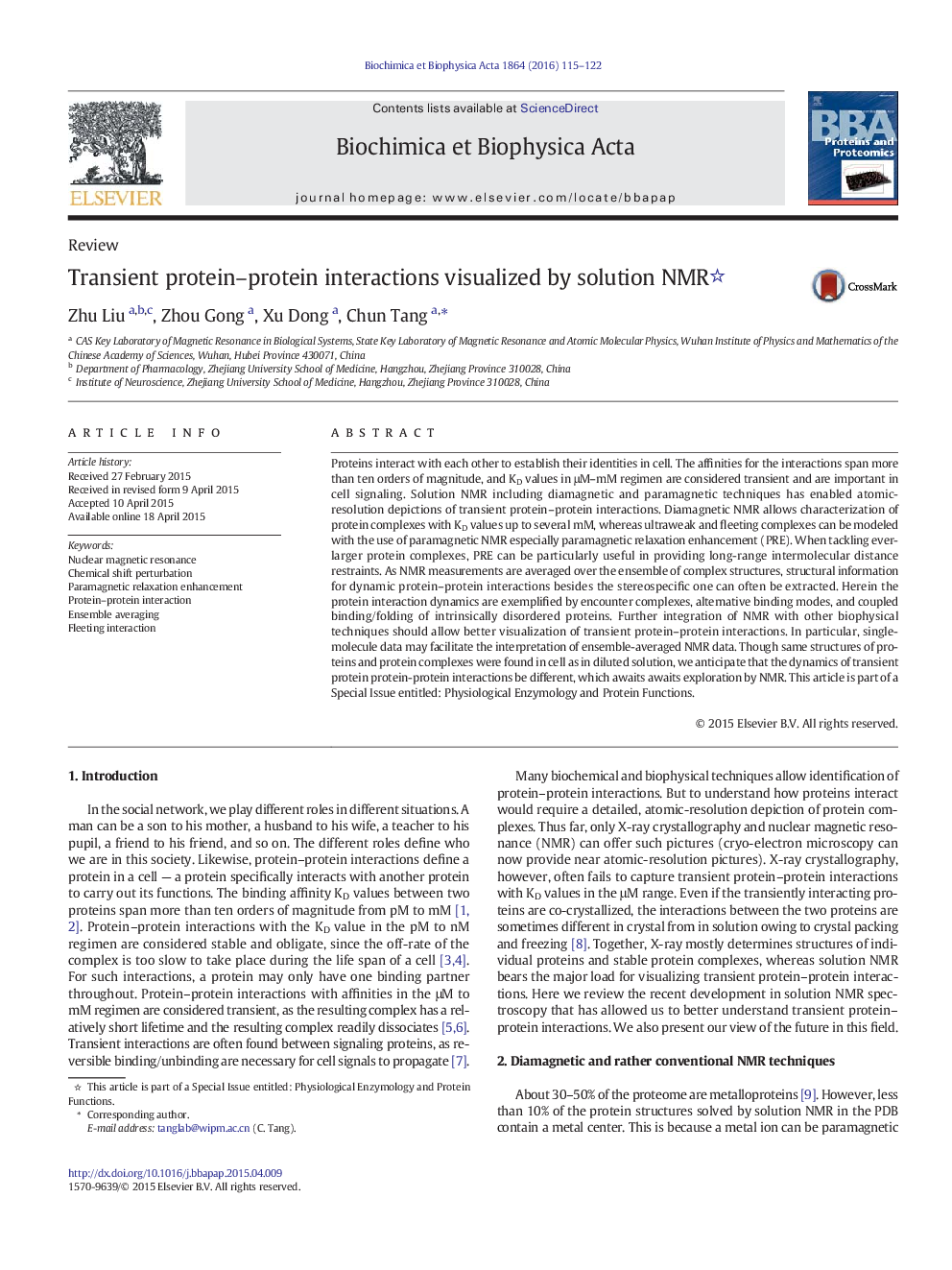| Article ID | Journal | Published Year | Pages | File Type |
|---|---|---|---|---|
| 1178211 | Biochimica et Biophysica Acta (BBA) - Proteins and Proteomics | 2016 | 8 Pages |
•NMR is well suited to investigate transient protein–protein interactions.•Paramagnetic NMR enables visualization of ultraweak and fleeting complexes.•More conformational states become NMR visible for weaker complexes.•The conformational states can be deduced from ensemble-averaged NMR parameters.
Proteins interact with each other to establish their identities in cell. The affinities for the interactions span more than ten orders of magnitude, and KD values in μM–mM regimen are considered transient and are important in cell signaling. Solution NMR including diamagnetic and paramagnetic techniques has enabled atomic-resolution depictions of transient protein–protein interactions. Diamagnetic NMR allows characterization of protein complexes with KD values up to several mM, whereas ultraweak and fleeting complexes can be modeled with the use of paramagnetic NMR especially paramagnetic relaxation enhancement (PRE). When tackling ever-larger protein complexes, PRE can be particularly useful in providing long-range intermolecular distance restraints. As NMR measurements are averaged over the ensemble of complex structures, structural information for dynamic protein–protein interactions besides the stereospecific one can often be extracted. Herein the protein interaction dynamics are exemplified by encounter complexes, alternative binding modes, and coupled binding/folding of intrinsically disordered proteins. Further integration of NMR with other biophysical techniques should allow better visualization of transient protein–protein interactions. In particular, single-molecule data may facilitate the interpretation of ensemble-averaged NMR data. Though same structures of proteins and protein complexes were found in cell as in diluted solution, we anticipate that the dynamics of transient protein protein-protein interactions be different, which awaits awaits exploration by NMR. This article is part of a Special Issue entitled: Physiological Enzymology and Protein Functions.This article is part of a Special Issue entitled: Physiological Enzymology and Protein Functions.
Graphical abstractFigure optionsDownload full-size imageDownload high-quality image (218 K)Download as PowerPoint slide
